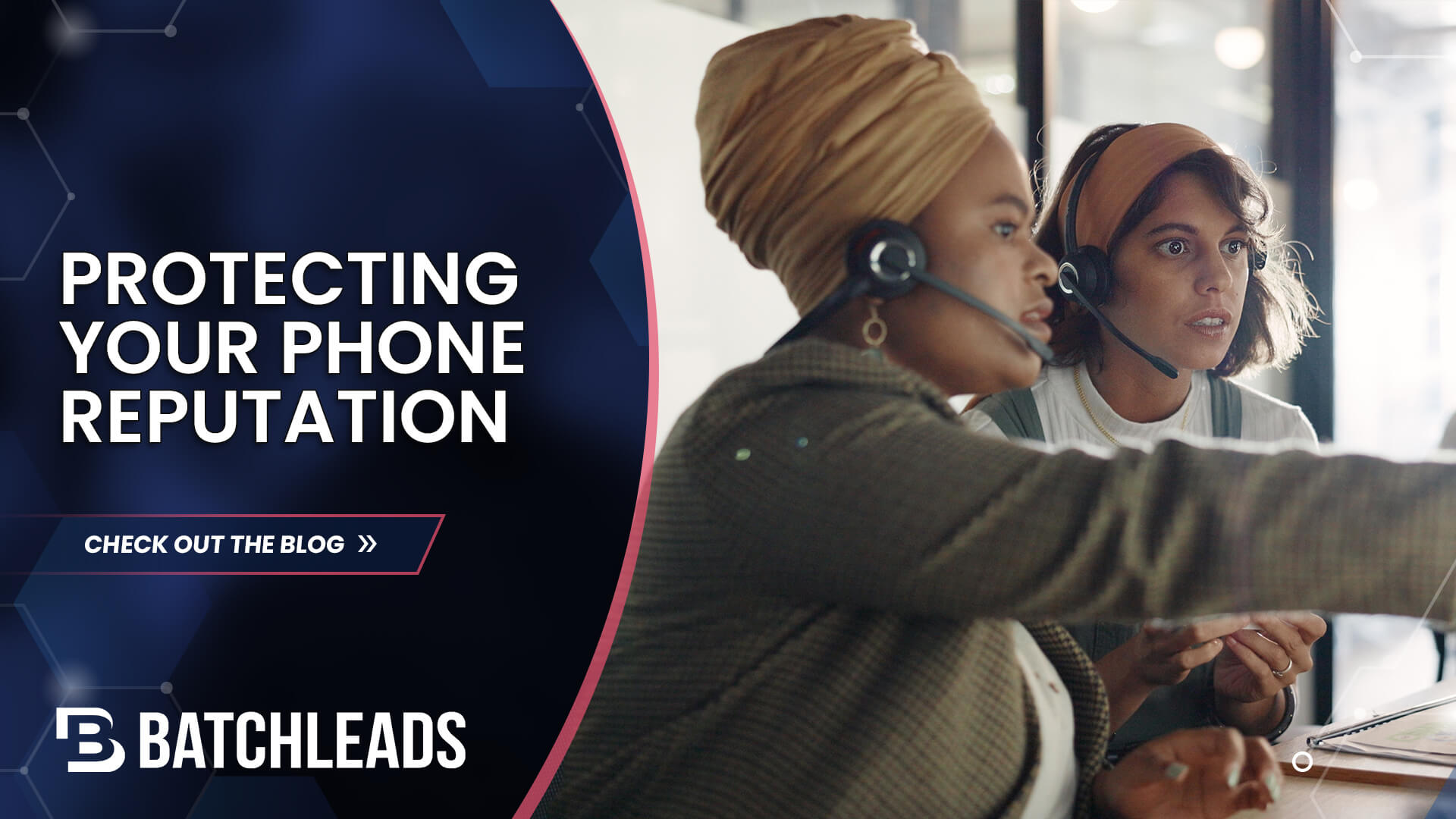Cold calling continues to be one of the most effective ways to generate leads. While it may not be new or innovative, cold calling still beats the conversion rates of SMS, email and direct mail marketing.
Cold calling also has a drawback, which is that it’s extremely easy to get flagged for making spam calls. About 40% of legitimate businesses experience a negative impact to their phone number reputation this way.
There’s no doubt that spam and scam phone calls are a serious problem for individuals and for businesses. According to a report by Truecaller, between May 2021-2022, more than 68.4 million Americans lost money to phone scams with an average reported loss of $577.
Phone carriers have struggled to keep up with the ever-changing methods of scam callers, but in an effort to do so they have been flagging legitimate phone numbers as spam or scam. Even worse, many businesses that use cold calling as a primary source of lead generation don’t even realize that their phone number reputation has been impacted.
The good news is that there are solutions that you can implement to avoid getting flagged. Below are some best practices that will protect your business’s phone number reputation and help avoid the dreaded scam likely label.
What does the scam likely label mean?
If your number is tagged with the scam likely label, it simply means the carrier who serves the person you are calling or your carrier has flagged your number. It can happen for a variety of reasons and it does not mean you’ve broken any regulations, such as the TCPA. The decision about who to flag is made individually at the carrier level, too, so if you get flagged by one carrier you may not have been flagged by the others.
One of the reasons that carriers flag calls as scam likely is because individuals have reported the number for bad behavior enough times to cross the carrier’s threshold. Since any call recipient can report any number, it’s not uncommon for cold callers to get mistakenly flagged even when the company is a legitimate business that is complying with all cold calling regulations.
Businesses can also be flagged simply because of their calling patterns. This can include making multiple calls to the same disconnected number, calling individuals more than twice per day, or not having a number to receive callbacks. To protect your phone number reputation, make sure that your cold calling behavior does not resemble a spammer or scammer.
How do calls get flagged as scam likely?
As a high-volume caller, there are multiple ways your outbound calls might get flagged:
Consumers
When consumers get calls from unknown numbers, it’s inevitable that some recipients will block the number, often without ever answering. If your numbers get blocked enough times, carriers will overcorrect and tag your number with the scam likely label. It doesn’t matter that the calls are legitimate.
Call-blocking apps Many call blocking apps protect their users from fraudulent calls, and in the process they sometimes also tag high-volume callers. Unfortunately, these apps use algorithms that are based on users’ responses, which don’t distinguish between an unwanted call and a spam call.
Carriers
Most of the carriers have implemented their own metrics to classify calling activities. For instance, if a single number makes ten calls a minute, or exceeds a certain number of calls per day or per week, the carrier automatically determines that the calls can’t be made from human dialing. The carrier might flag your number in such cases.
Again, it doesn’t matter that the calls aren’t spam. Simply having calling behavior similar to spammers is enough to get flagged.
BatchDialer’s phone number reputation management dashboard shows you which carriers have flagged your number so you know which carriers to contact.
How to avoid getting flagged: a few tips to consider
Know the Guidelines
The first thing that you need to do is to know the regulations established by the FCC and comply with them. The FCC has its own set of guidelines that a company must follow to avoid being flagged.
One of the guidelines included in the Telemarketing Sales Rule (TSR) states that telemarketers aren’t allowed to call people who are in the National Do Not Call Registry. As a caller, it’s imperative to follow this rule, as calling numbers on the registry can have severe consequences. Your phone number reputation could be negatively affected and you could be fined up to $43,792 per call.
This on-demand webinar explores cold calling best practices that will help you protect your phone reputation and increase connection rates.
Focus on User Experience
If your calls are placed by a person (as opposed to robocalls), and you offer a number for potential customers to return your calls, you’re already distinguishing yourself from a spammer.
One of the best strategies for getting your calls answered is determining the best time of day for connecting with your contact list. You can implement this in two ways. One way is if you get someone on the phone and they ask you to call them again at another time. Make a note of it and follow through at that time.
The other way is to identify demographic patterns. If you’re trying to connect with millennials, they’re less likely to answer their phones at night, versus retirees, who are more receptive to nighttime calls.
The more you’re able to get people to answer your calls the more you’ll be able to maintain your phone number reputation. If your customers don’t answer, make sure to leave a voicemail to let them know who you are and why you are calling. This will lessen the chances of them reporting your number.
Technology Solutions
The most important thing your dialer technology should be doing for you is alerting you if your calls are being flagged. There is nothing worse than learning after the fact that all of your cold calling efforts were being impeded by this label. Make sure that whatever dialing system you use monitors your phone number reputation daily and alerts you to any changes.
BatchDialer’s phone number reputation management tool tracks the status of your numbers and can automatically replace at-risk numbers free of charge.
Next, make sure that you’re using multiple outbound phone numbers. By doing this, you reduce the number of calls per hour or per day made by a single number. As a result, your numbers are less likely to get flagged by the carriers or the service providers.
Another advantage of having multiple numbers is that when one gets flagged, you can put it to sleep and use a new one. BatchDialer does this automatically and replaces it with a fresh number.
You should also use scrubber utilities to automatically trim problem numbers. This will eliminate any disconnected numbers, numbers of people who have declined your product or service, and any numbers on the Do Not Call registry.
What if your Number has Already Been Flagged?
If your number has already been flagged, it’s not the end of the world. You can always reach out to telephone carriers if they have mistakenly labeled your number. Each of the carriers has different processes so you will need to contact them and ask them to remove the tag. They might verify the numbers first before they can remove the label.
In Summary
Protecting and maintaining your phone number reputation should be a daily practice if your business depends upon cold calling. Implementing these techniques will help protect y



